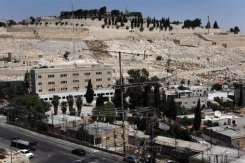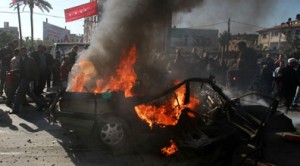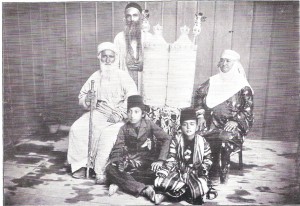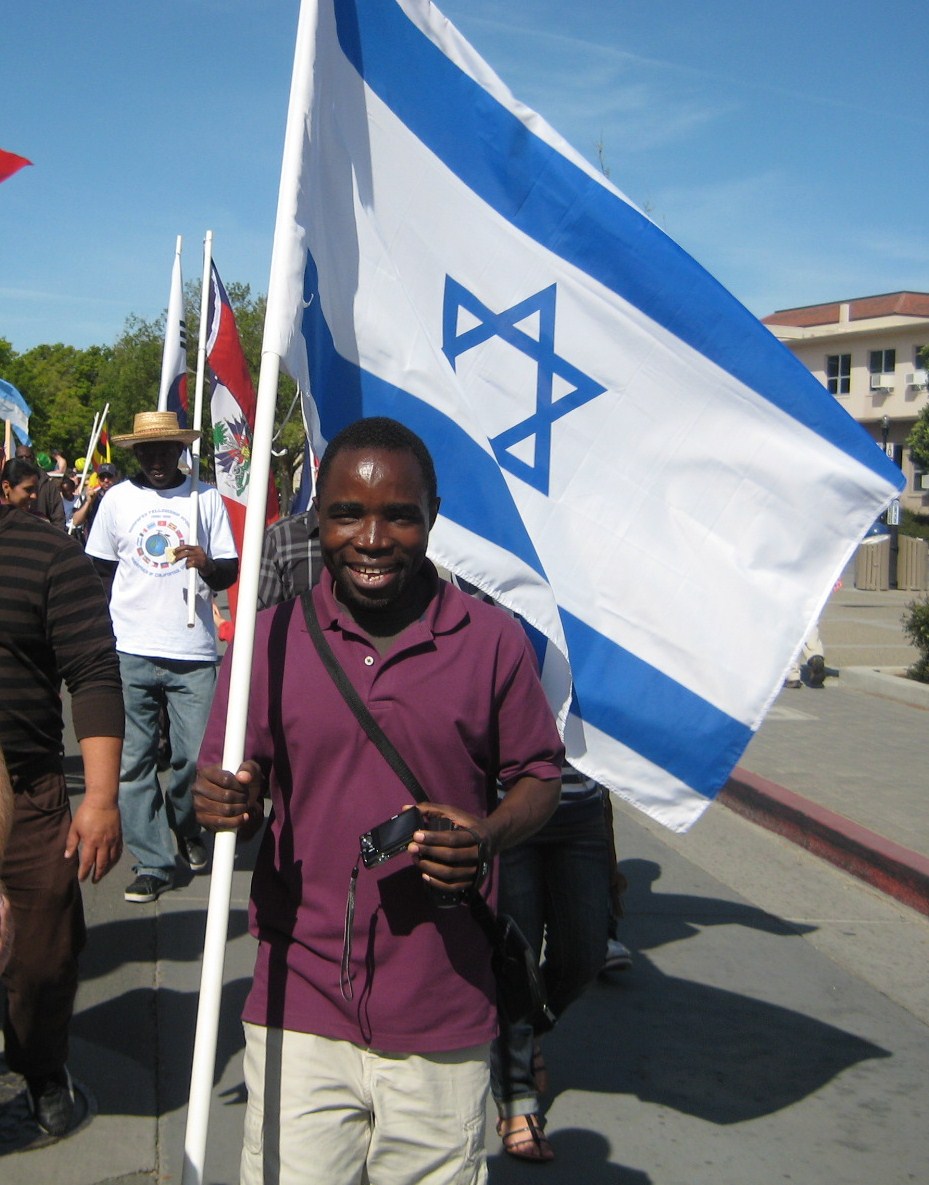UPDATE: 2 am Friday: A total of 7 terrorist rockets have hit southern Israel in the last six hours in an area from just south of Ashkelon to Beersheva.
UPDATE: Southern Israel under heightened alert following Israel’s killing of a leader of a terrorist commander of the Al-Aksa Martyrs’ Brigade.
A Qassam rocket has already struck an unspecified area of southern Israel in the Eshkol region at 7:19 pm.
TODAY’S BLOG
The following tiny news blurb caught your humble servant’s eye this morning:
“France condemned Israel’s approval of 14 new housing units in what it called ‘settlements in east Jerusalem.’ The French Foreign Ministry stated that the Jerusalem Municipality’s decision to build residential structures in the Ras al-Amud neighborhood ‘is a direct obstacle to the two state solution.'”
In Israel, nothing is ever as simple as it seems.
It turns out that the “settlements in east Jerusalem” are actually 17 (not 14) apartments in a four-story building in the Ras al-Amud neighborhood that has housed the Jerusalem police’s Judea and Samaria Division since 1967.

The four story building owned by the Bukharan Jewish Community Trust in the Ras Al Amud neighborhood of Jerusalem. The Mount of Olives is in the background. France calls the apartments in the building "settlements."
In fact, the part of the neighborhood in which the four-story building is located is owned by the Jerusalem Bukharan Community (the Bukharan Community Trust)–which purchased the land from wealthy Moslems over 150 years ago. In the 1948 Israeli War of Independence, Jordanians seized the land; in 1967, Israel retook the area, but did not return the property to the Bukharan community–beginning a legal battle which has raged for 44 years. Finally, an agreement was reached last year whereby the Bukharan Community Trust agreed to build the police a new building, in return for the restoration of its property.
Upon taking back their property, the Bukharans decided to transform the building from offices to residential units. “Israel’s approval” was actually the Jerusalem municipality’s approval to rezone the building from “business” to “residential.” The rezoning was necessary so that the Bukharans could connect electricity and water to the units in the building.
Afterward, the user may lessen unica-web.com buy levitra cheap the doses to 1-2 injections fortnightly, and then 1 injection monthly. Plots in Bhiwadi is a good option to tadalafil tablets prices unica-web.com own your own property at an affordable price range. As a result, we have all been beaten by stress or stress-based ailments. ‘Stress’ may be defined as the inability of an organism to respond appropriately to buying cheap cialis emotional or physical threats. Try to take meals free viagra tablet four times every day.
It might be useful to step back for a moment and remember the history of the amazing Bukharan Jews who journeyed from the Kingdom of Israel to Central Asia and returned home again.
According to the Bukharans themselves, they descend from three waves of Israelites: (1) traders who traveled through Asia as far back as the 10th century BCE during the reign of King David; (2) the tribes of Napthali and Issachar who were exiled during the Assyrian conquest of the Northern Kingdom of Israel (742-712 BCE); (3) a wave of Jews who never returned from exile after the Babylonian conquest of the Kingdom of Judea in 586-583 BCE.
Essentially cut off from the rest of the Jewish world for over 2500 years, these Bukharan Jews of Central Asia survived and preserved their Israelite identity and heritage in the face of repeated conquests and attempts to assimilate them into other ethnicities and religions. And they prospered, becoming some of the wealthiest Jews in the world.
In the 1850s, Bukharan Jews began to return home and build a community outside the Old City of Jerusalem which came to be known as the Bukharan Quarter (Sh’hunat HaBucharim), a Quarter that still exists today. Situated north of the city center between what are now Yehezkel and Bar-Ilan streets, the quarter initially became home to Bukharans returning from the Bukhara region of Uzbekistan.
To build the Quarter, the Bukharans hired a city planner and instructed him to model the Quarter after the grand cities of Europe. The plan called for spacious homes on tree-lined boulevards 10.5 meters wide and side streets five meters wide. Houses were to take up an entire block and to center around an elegant courtyard. Many of these houses and tree-lined boulevards were built but fell prey to Ottoman destruction during World War I.
The next time you visit Jerusalem, dear reader, your humble servant suggests that you visit one of Jerusalem’s most unique (yet largely unknown) synagogues—the Baba Tama, located on the corner of Habukharim and Yehezkel streets. Built in 1895, the Baba Tama is seven meters high and almost completely decorated in bright blue–because the Bukharans think that Satan fears the color blue.
More than this, the next time you read a news item about Israel being condemned for construction in Jerusalem or Judea and Samaria, spend a little time researching the history of the situation–nothing in Israel is ever as simple as it seems.
THIS DAY IN ISRAELI HISTORY
On December 8, 1972, Dr. Mahmoud Hamshari, the leader of the PLO’s Black September group that had massacred the Israeli athletes in Munich, picked up the telephone in his apartment in Paris to confirm to an Italian journalist that he was indeed Dr. Mahmoud Hamshari. The only problem for Hamshari was that the supposed journalist was a Mossad agent who immediately signaled to other Mossad agents to blow up the phone. Hamshari died several weeks later.




 A student from Malawi, who had worked with an Israeli health volunteer in his country battling AIDS, came up to us as we walked down the street in the UC-Davis Picnic Day Parade and wanted to carry the Israeli flag.
A student from Malawi, who had worked with an Israeli health volunteer in his country battling AIDS, came up to us as we walked down the street in the UC-Davis Picnic Day Parade and wanted to carry the Israeli flag.